 Search by Keyword
Sign Up Below for our MONTHLY BEATLES TRIVIA QUIZ!
|
“MICHELLE”
(John Lennon – Paul McCartney)
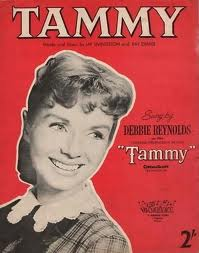 In 1977, the popular syndicated US radio program “American Top 40” had a special edition of their show which counted down the Top 40 “girl songs.” The criteria involved for this chart was that a girl’s name needed to be in the song’s title and they tabulated the chart action on the Billboard Hot 100 throughout the entire rock era up until that time, which was the period between 1955 and the current year of 1977. In 1977, the popular syndicated US radio program “American Top 40” had a special edition of their show which counted down the Top 40 “girl songs.” The criteria involved for this chart was that a girl’s name needed to be in the song’s title and they tabulated the chart action on the Billboard Hot 100 throughout the entire rock era up until that time, which was the period between 1955 and the current year of 1977.
The #1 song was NOT “Michelle” by The Beatles. In fact, “Michelle” didn’t make this list at all! The top honors went to Debbie Reynolds’s 1957 hit “Tammy.” Since all of the listeners were expecting the enormously popular Beatles song to place on this chart, the reason was explained during the countdown.
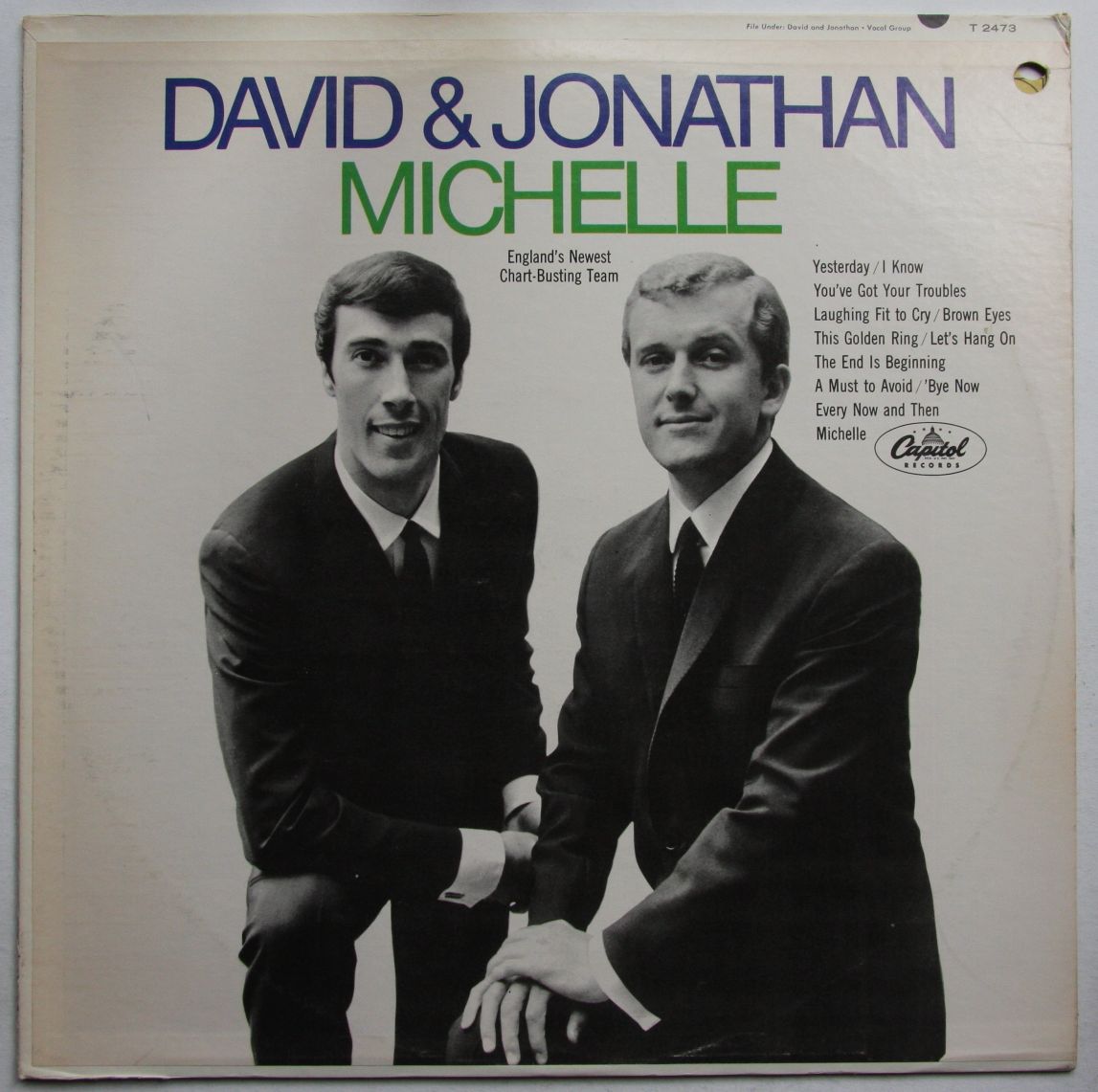 The simple reason was that “Michelle” was never released as a single by The Beatles in America. A version of the song was released by the duo David & Jonathan in 1966, but it only reached #18 on the Billboard Hot 100, which wasn’t high enough to make it onto the survey. The simple reason was that “Michelle” was never released as a single by The Beatles in America. A version of the song was released by the duo David & Jonathan in 1966, but it only reached #18 on the Billboard Hot 100, which wasn’t high enough to make it onto the survey.
“A lot of people said ‘Michelle’ would have made a good single,” Paul McCartney stated in interview. “There are songs which we like but we wouldn’t like to have out as singles. ‘Cause it’s a very funny thing about putting a single out. We always used to think for a single we’d have to have something pretty fast. I don’t know why. They always sounded like the singles. So when we did ‘Michelle,’ we all thought it was okay, but we just didn’t want it out as representative of us at the time.”
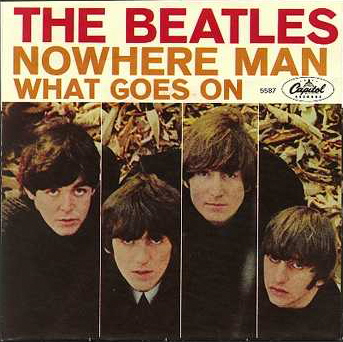 Because of this thinking, “We Can Work It Out” and “Day Tripper” became the double-sided single in Britain that emerged from these sessions. Capitol Records in the US were always keen to spot another candidate for a single and hold it back for the future, but this time around they hand-picked “Nowhere Man,” this decision proving to be a successful choice three months later. Because of this thinking, “We Can Work It Out” and “Day Tripper” became the double-sided single in Britain that emerged from these sessions. Capitol Records in the US were always keen to spot another candidate for a single and hold it back for the future, but this time around they hand-picked “Nowhere Man,” this decision proving to be a successful choice three months later.
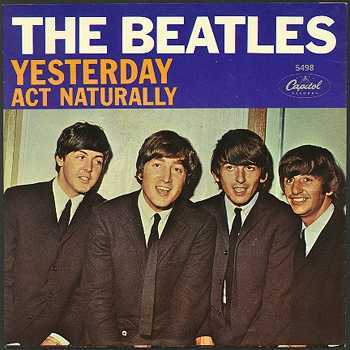 Little did Capitol know that radio stations would give immense exposure to “Michelle” on their playlists across the country. After all, the December 1965 released “Rubber Soul” album was the first American Beatles LP that didn’t feature a hit song. American fans were curious about the music on the album and “Michelle” seemed to be the most commercially acceptable candidate for airplay. With Paul’s ballad “Yesterday” recently perched in the top spot of the Billboard Hot 100 one month earlier, “Michelle” was accepted with open arms by the masses. In fact, this double-punch of ballads from Paul did much to cement the opinion that Paul was the balladeer of the group. Little did Capitol know that radio stations would give immense exposure to “Michelle” on their playlists across the country. After all, the December 1965 released “Rubber Soul” album was the first American Beatles LP that didn’t feature a hit song. American fans were curious about the music on the album and “Michelle” seemed to be the most commercially acceptable candidate for airplay. With Paul’s ballad “Yesterday” recently perched in the top spot of the Billboard Hot 100 one month earlier, “Michelle” was accepted with open arms by the masses. In fact, this double-punch of ballads from Paul did much to cement the opinion that Paul was the balladeer of the group.
Songwriting History
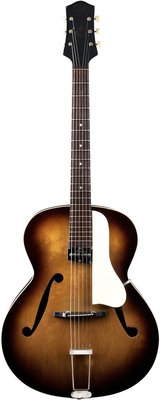 While the song’s composition wasn’t complete until just prior to its recording on November 3rd, 1965, the genesis of “Michelle” dates back into the previous decade. In fact, Paul names the embryo of this song among the very first compositions he ever wrote, even revealing the guitar he wrote it on; a Zenith Model 17 acoustic that he traded a trumpet for. “All my first songs…were written on the Zenith,” Paul remembers, “songs like ‘Michelle’ and ‘I Saw Her Standing There.’ It was on this guitar that I learnt ‘Twenty Flight Rock,’ the song that later got me into the group The Quarry Men.” While the song’s composition wasn’t complete until just prior to its recording on November 3rd, 1965, the genesis of “Michelle” dates back into the previous decade. In fact, Paul names the embryo of this song among the very first compositions he ever wrote, even revealing the guitar he wrote it on; a Zenith Model 17 acoustic that he traded a trumpet for. “All my first songs…were written on the Zenith,” Paul remembers, “songs like ‘Michelle’ and ‘I Saw Her Standing There.’ It was on this guitar that I learnt ‘Twenty Flight Rock,’ the song that later got me into the group The Quarry Men.”
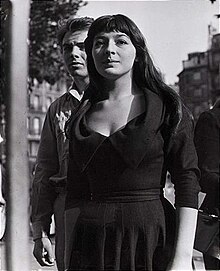 Paul goes on to relate the actual inspiration for the song, which dates it back to parties held as early as 1959. “There used to be a guy called Austin Mitchell who was one of John’s tutors at art school and he used to throw some pretty good all-night parites. You could maybe pull girls there, which was the main aim of every second; you could get drinks, which was another aim; and you could generally put yourself about a bit. I member sitting around there, and my recollection is of a black turtleneck sweater and sitting very enigmatically in the corner playing this rather French tune. I used to pretend I could speak French, because everyone wanted to be like Sacha Distel or Juliette Greco…So I used to sit around and murmur. It was my Maurice Chevalier meets Juliette Greco moment: me trying to be enigmatic to make girls think, ‘Who’s that very interesting French guy over in the corner?’ I would literally use it as that, and John knew this was one of my ploys.” Paul goes on to relate the actual inspiration for the song, which dates it back to parties held as early as 1959. “There used to be a guy called Austin Mitchell who was one of John’s tutors at art school and he used to throw some pretty good all-night parites. You could maybe pull girls there, which was the main aim of every second; you could get drinks, which was another aim; and you could generally put yourself about a bit. I member sitting around there, and my recollection is of a black turtleneck sweater and sitting very enigmatically in the corner playing this rather French tune. I used to pretend I could speak French, because everyone wanted to be like Sacha Distel or Juliette Greco…So I used to sit around and murmur. It was my Maurice Chevalier meets Juliette Greco moment: me trying to be enigmatic to make girls think, ‘Who’s that very interesting French guy over in the corner?’ I would literally use it as that, and John knew this was one of my ploys.”
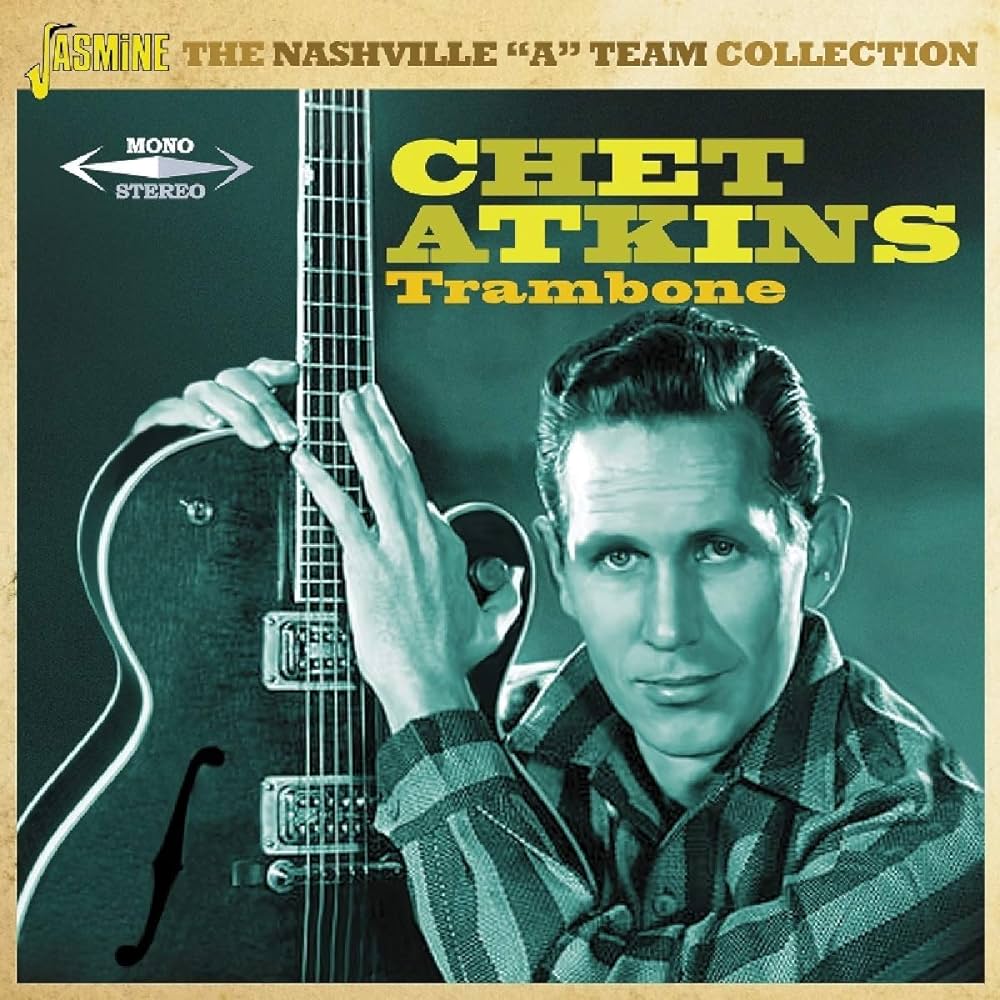 The song at this point was merely an instrumental that Paul would play at the above mentioned parties while vocalizing a bit. “I used to pretend I was French, ‘…jou jou jou,’ and nobody knew the difference,” he explained. In his book “Many Years From Now,” Paul related the musical inspiration for the melody: “’Michelle’ was a tune that I’d written in Chet Atkins’ finger-pickin’ style. There is a song he did called ‘Trambone’ with a repetitive top line, and he played a bass line whilst playing a melody. This was an innovation for us; even though classical guitarists had played it, no rock ‘n’ roll guitarists had played it. The first person we knew to use finger-pickin’ technique was Chet Atkins…Based on Chet Atkins’s ‘Trambone,’ I wanted to write something with a melody and a bass line on it, so I did. I just had it as an instrumental in C.” The song at this point was merely an instrumental that Paul would play at the above mentioned parties while vocalizing a bit. “I used to pretend I was French, ‘…jou jou jou,’ and nobody knew the difference,” he explained. In his book “Many Years From Now,” Paul related the musical inspiration for the melody: “’Michelle’ was a tune that I’d written in Chet Atkins’ finger-pickin’ style. There is a song he did called ‘Trambone’ with a repetitive top line, and he played a bass line whilst playing a melody. This was an innovation for us; even though classical guitarists had played it, no rock ‘n’ roll guitarists had played it. The first person we knew to use finger-pickin’ technique was Chet Atkins…Based on Chet Atkins’s ‘Trambone,’ I wanted to write something with a melody and a bass line on it, so I did. I just had it as an instrumental in C.”
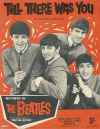 One distinct element of this mostly instrumental piece was worthy of mention by Paul. "The other interesting point was there’s a very jazzy chord in it: ‘Michelle, ma belle.’ That second chord. That was a chord that was used twice in The Beatles: once to end George’s solo on ‘Till There Was You’ and again when I used it in this. It was a chord shown to us by a jazz guitarist called Jim Gretty who worked behind the counter at Frank Hessey’s where we used to buy our instruments on the never-never in Liverpool. So Jim Gretty showed us this one great ham-fisted jazz chord, bloody hell! George and I learned it off him." One distinct element of this mostly instrumental piece was worthy of mention by Paul. "The other interesting point was there’s a very jazzy chord in it: ‘Michelle, ma belle.’ That second chord. That was a chord that was used twice in The Beatles: once to end George’s solo on ‘Till There Was You’ and again when I used it in this. It was a chord shown to us by a jazz guitarist called Jim Gretty who worked behind the counter at Frank Hessey’s where we used to buy our instruments on the never-never in Liverpool. So Jim Gretty showed us this one great ham-fisted jazz chord, bloody hell! George and I learned it off him."
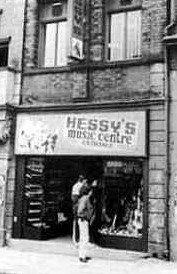 Paul gives another account of this story in his 2021 book "The Lyrics" that gives even more interesting details. "We used to love going into this shop, even though it meant we had to pay our dues with our little books because, of course, we'd bought our guitars on an installment plan. Jim Gretty would often stand behind the counter in Hessy's, playing a bit of guitar, as guys in music shops so often do. We really admired his skills. He was far more advanced than us. One chord we heard him play was particularly lush, and he took the trouble to demonstrate it to us. It was what we knew as an F chord, a simple F shape, down at the first position, down at the nut. But Jim used two more of his fingers to cover the first two strings up on the fourth fret, which would be A-flat and E-flat, so there was an extra component to the F chord. The good thing was that if he showed something to both of us, we were bound to remember it because if George forgot it I'd remember it, and vice versa. We called Gretty's lush F chord 'F demented.'" Paul gives another account of this story in his 2021 book "The Lyrics" that gives even more interesting details. "We used to love going into this shop, even though it meant we had to pay our dues with our little books because, of course, we'd bought our guitars on an installment plan. Jim Gretty would often stand behind the counter in Hessy's, playing a bit of guitar, as guys in music shops so often do. We really admired his skills. He was far more advanced than us. One chord we heard him play was particularly lush, and he took the trouble to demonstrate it to us. It was what we knew as an F chord, a simple F shape, down at the first position, down at the nut. But Jim used two more of his fingers to cover the first two strings up on the fourth fret, which would be A-flat and E-flat, so there was an extra component to the F chord. The good thing was that if he showed something to both of us, we were bound to remember it because if George forgot it I'd remember it, and vice versa. We called Gretty's lush F chord 'F demented.'"
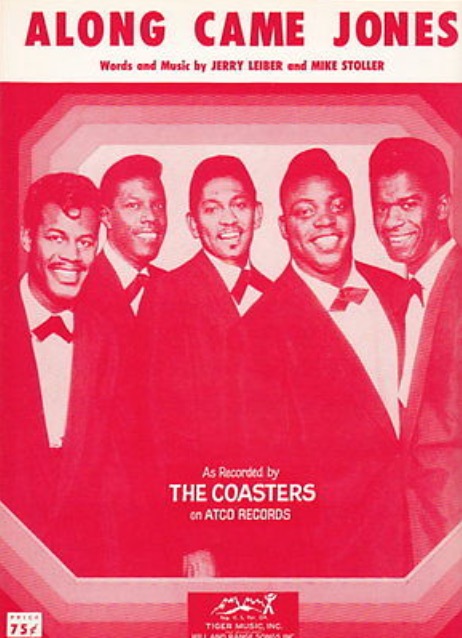 Various sheet music sources identify this chord as either Bb7#9 or Bbm7, among others. Keeping in mind that a capo was used on their guitars when the song was recorded, it would make sense for Paul to refer to it as an altered F chord. "I put in a second naughty chord," Paul adds. "Again, I don't know its name - maybe D dimished? I got it off The Coasters record 'Along Came Jones.' I used these two chords and this melody, and grunted along like a cod Frenchman, and there was 'Michelle.'" Various sheet music sources identify this chord as either Bb7#9 or Bbm7, among others. Keeping in mind that a capo was used on their guitars when the song was recorded, it would make sense for Paul to refer to it as an altered F chord. "I put in a second naughty chord," Paul adds. "Again, I don't know its name - maybe D dimished? I got it off The Coasters record 'Along Came Jones.' I used these two chords and this melody, and grunted along like a cod Frenchman, and there was 'Michelle.'"
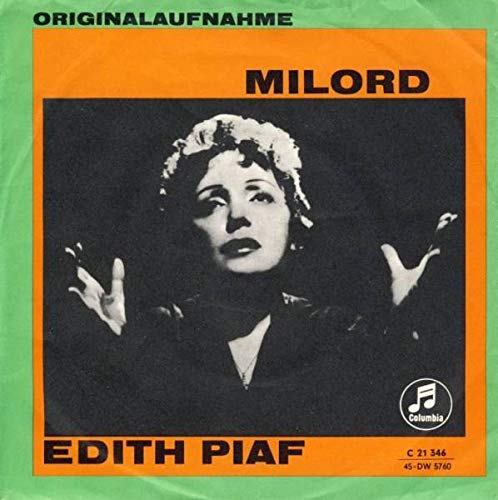 An additional inspiration for "Michelle" was revealed in Paul's "McCartney 3,2,1" series. He states: "The other thing was, 'cause I had the 'Frenchy' thing in my mind, Edith Piaf did a record "Milord.' I was kind of going off the back of that. 'Milord,' 'Michelle.'" In his 2021 book "The Lyrics," Paul adds: "'Milord' was interesting because it was out of left field, whereas with other songs you knew what genre they were. In 'Milord,' (Edith) Piaf does the old trick of slowing down in the course of the song. I must have had a memory of that in the hopper." Edith Piaf's "Milord" was one of the biggest selling songs of 1960 in Germany, reaching #1 on the charts in that country, charting a respectable #21 in the UK that year. An additional inspiration for "Michelle" was revealed in Paul's "McCartney 3,2,1" series. He states: "The other thing was, 'cause I had the 'Frenchy' thing in my mind, Edith Piaf did a record "Milord.' I was kind of going off the back of that. 'Milord,' 'Michelle.'" In his 2021 book "The Lyrics," Paul adds: "'Milord' was interesting because it was out of left field, whereas with other songs you knew what genre they were. In 'Milord,' (Edith) Piaf does the old trick of slowing down in the course of the song. I must have had a memory of that in the hopper." Edith Piaf's "Milord" was one of the biggest selling songs of 1960 in Germany, reaching #1 on the charts in that country, charting a respectable #21 in the UK that year.
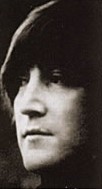 No serious work was ever attempted on this instrumental through the years, but since they knew that they needed to crank out another group of original songs for the upcoming “Rubber Soul” album, this tune was remembered. McCartney recalls: “Years later, John said, ‘D’you remember that French thing you used to do at Mitchell’s parties?’ I said yes. He said, ‘Well, that’s a good tune. You should do something with that.’ We were always looking for tunes, because we were making lots of albums by then and every album you did needed fourteen songs, and then there were singles in between, so you needed a lot of material. So I did.” No serious work was ever attempted on this instrumental through the years, but since they knew that they needed to crank out another group of original songs for the upcoming “Rubber Soul” album, this tune was remembered. McCartney recalls: “Years later, John said, ‘D’you remember that French thing you used to do at Mitchell’s parties?’ I said yes. He said, ‘Well, that’s a good tune. You should do something with that.’ We were always looking for tunes, because we were making lots of albums by then and every album you did needed fourteen songs, and then there were singles in between, so you needed a lot of material. So I did.”
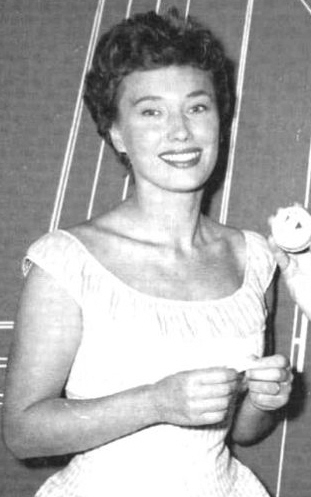 This takes us to September of 1965 just after The Beatles completed their American tour. Paul visited the Portugal holiday home of Muriel Young, a radio presenter for Radio Luxembourg, during their month off. “He sat on our sofa with Jane Asher and he was trying to find the words,” Muriel Young remembers. “It wasn’t ‘Michelle, ma belle’ then. He was singing ‘Goodnight sweetheart’ and then ‘Hello my dear,’ just looking for something that would fit the rhythm.” This takes us to September of 1965 just after The Beatles completed their American tour. Paul visited the Portugal holiday home of Muriel Young, a radio presenter for Radio Luxembourg, during their month off. “He sat on our sofa with Jane Asher and he was trying to find the words,” Muriel Young remembers. “It wasn’t ‘Michelle, ma belle’ then. He was singing ‘Goodnight sweetheart’ and then ‘Hello my dear,’ just looking for something that would fit the rhythm.”
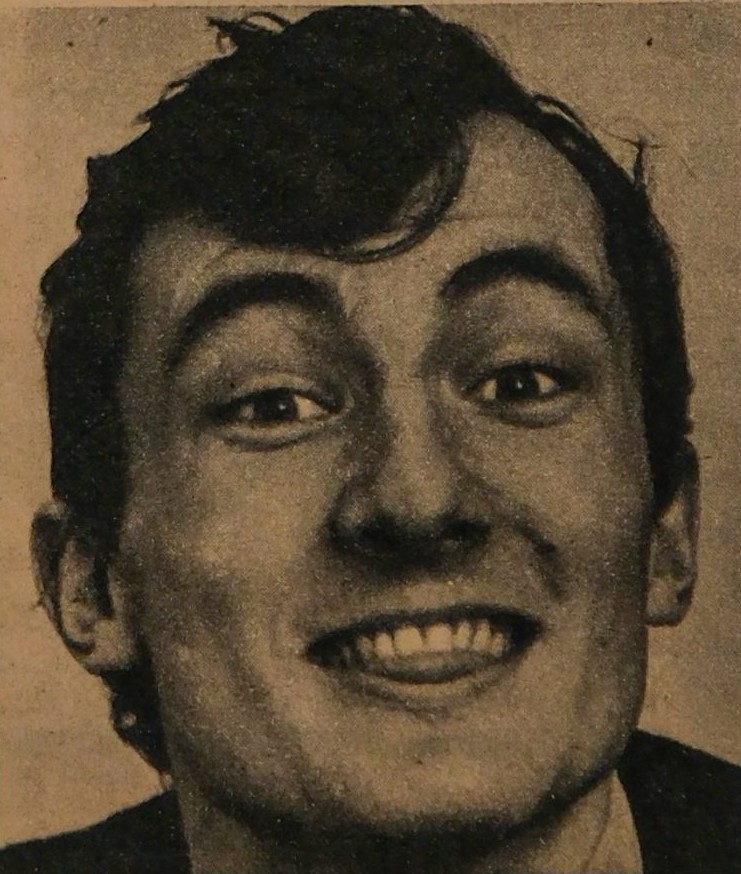 Jan Vaughan, who was the wife of Paul’s childhood friend Ivan Vaughan (who introduced Paul to John back in 1957), was a teacher who taught French, so Paul decided to take advantage of this connection. “I asked her what sort of things I could say that were French and which would go together well,” Paul relates. “It was because I’d always thought that the song sounded French that I stuck with it. I can’t speak French properly so that’s why I needed help in sorting out the actual words.” John remembered in his 1980 Playboy interview, “Going French was Paul’s idea.” Jan Vaughan, who was the wife of Paul’s childhood friend Ivan Vaughan (who introduced Paul to John back in 1957), was a teacher who taught French, so Paul decided to take advantage of this connection. “I asked her what sort of things I could say that were French and which would go together well,” Paul relates. “It was because I’d always thought that the song sounded French that I stuck with it. I can’t speak French properly so that’s why I needed help in sorting out the actual words.” John remembered in his 1980 Playboy interview, “Going French was Paul’s idea.”
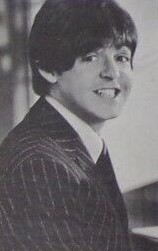 Jan Vaughan remembers: “He asked me if I could think of a French girl’s name, with two syllables, and then a description of the girl which would rhyme. He played me the rhythm on his guitar and that’s when I came up with ‘Michelle, ma belle,’ which wasn’t actually that hard to think of! I think it was some days later that he phones me up and asked if I could translate the phrase ‘these are words that go together well’ and I told him that it should be ‘sont les mots qui vont tres bien ensemble.’” Jan Vaughan remembers: “He asked me if I could think of a French girl’s name, with two syllables, and then a description of the girl which would rhyme. He played me the rhythm on his guitar and that’s when I came up with ‘Michelle, ma belle,’ which wasn’t actually that hard to think of! I think it was some days later that he phones me up and asked if I could translate the phrase ‘these are words that go together well’ and I told him that it should be ‘sont les mots qui vont tres bien ensemble.’”
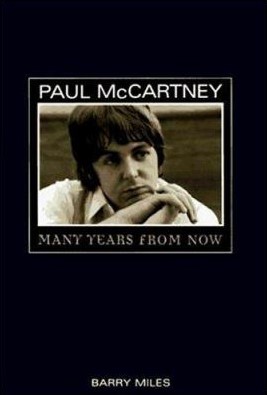 Paul corroborates the story in the "McCartney 3,2,1" series, explaining: "Jan was a French teacher, and I said, 'Oh Jan, you gotta help me. What's a rhyme for 'Michelle'? She said, 'Ma Belle.' I said, 'What's that mean?' She said, 'My beauty.'" In his book "Many Years From Now," Paul continues the story: "I said, 'That's good, a love song, great.' We just started talking, and I said, 'Well, those words go together well, what's French for that, "go together well"? 'Sont les mois qui vont tres bien ensemble.' I said, 'All right, that would fit.' And she told me a bit how to pronounce it, so that was it. I got that off Jan, and years later I sent her a check around. I thought I better had because she’s virtually a co-writer on that. From there I just pieced together the verses." In his book "The Lyrics," Paul adds: "You must sound the b in 'ensemble.' I'd always said 'ensemble' with a silent b." Paul corroborates the story in the "McCartney 3,2,1" series, explaining: "Jan was a French teacher, and I said, 'Oh Jan, you gotta help me. What's a rhyme for 'Michelle'? She said, 'Ma Belle.' I said, 'What's that mean?' She said, 'My beauty.'" In his book "Many Years From Now," Paul continues the story: "I said, 'That's good, a love song, great.' We just started talking, and I said, 'Well, those words go together well, what's French for that, "go together well"? 'Sont les mois qui vont tres bien ensemble.' I said, 'All right, that would fit.' And she told me a bit how to pronounce it, so that was it. I got that off Jan, and years later I sent her a check around. I thought I better had because she’s virtually a co-writer on that. From there I just pieced together the verses." In his book "The Lyrics," Paul adds: "You must sound the b in 'ensemble.' I'd always said 'ensemble' with a silent b."
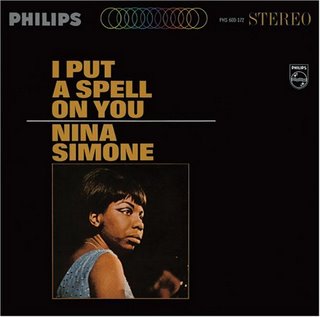 Apparently at this point, the song consisted of only verses. This is where John Lennon comes in, as he explains in 1980: “He and I were staying somewhere and he walked in and hummed the first few bars, with the words, and he says, ‘Where do I go from here?’ I had been listening to (blues singer) Nina Simone. I think it was ‘I Put A Spell On You.’ There was a line in it that went, ‘I love you, I love you, I love you.’ That’s what made me think of the middle-eight for ‘Michelle.’ So my contributions to Paul’s songs was always to add a little bluesy edge to them. Otherwise, ‘Michelle’ is a straight ballad, right? He provides a lightness, an optimism, while I would always go for the sadness, the discords, the bluesy notes.” Apparently at this point, the song consisted of only verses. This is where John Lennon comes in, as he explains in 1980: “He and I were staying somewhere and he walked in and hummed the first few bars, with the words, and he says, ‘Where do I go from here?’ I had been listening to (blues singer) Nina Simone. I think it was ‘I Put A Spell On You.’ There was a line in it that went, ‘I love you, I love you, I love you.’ That’s what made me think of the middle-eight for ‘Michelle.’ So my contributions to Paul’s songs was always to add a little bluesy edge to them. Otherwise, ‘Michelle’ is a straight ballad, right? He provides a lightness, an optimism, while I would always go for the sadness, the discords, the bluesy notes.”
Paul agrees, saying: “The ‘I love you, I love you, I love you’ wasn’t in the original. The original was just the chorus. That sounds like Nina Simone, I can see that. I’ll give him ten points for that.”
Recording History
 With about one half of the “Rubber Soul” album complete, The Beatles convened in EMI Studio Two on November 3rd, 1965, for a nine hour recording session to fully record "Michelle," their recently completed composition. Two sessions that day were booked, the first comprising four-and-a-half hours (from 2:30 to 7 pm) with a second session of the same length occurring immediately afterward (from 7 pm to 11:30 pm). In the 2021 Hulu series "McCartney 3,2,1," Paul specifically states "We had one and a half hours to make that track, which is pretty economical." EMI documentation stipulates that not being the case, which unfortunately reveals the uncertainty of Paul's memory. However, at 79 years of age, how much could you recall of a past event over 56 years ago? With about one half of the “Rubber Soul” album complete, The Beatles convened in EMI Studio Two on November 3rd, 1965, for a nine hour recording session to fully record "Michelle," their recently completed composition. Two sessions that day were booked, the first comprising four-and-a-half hours (from 2:30 to 7 pm) with a second session of the same length occurring immediately afterward (from 7 pm to 11:30 pm). In the 2021 Hulu series "McCartney 3,2,1," Paul specifically states "We had one and a half hours to make that track, which is pretty economical." EMI documentation stipulates that not being the case, which unfortunately reveals the uncertainty of Paul's memory. However, at 79 years of age, how much could you recall of a past event over 56 years ago?
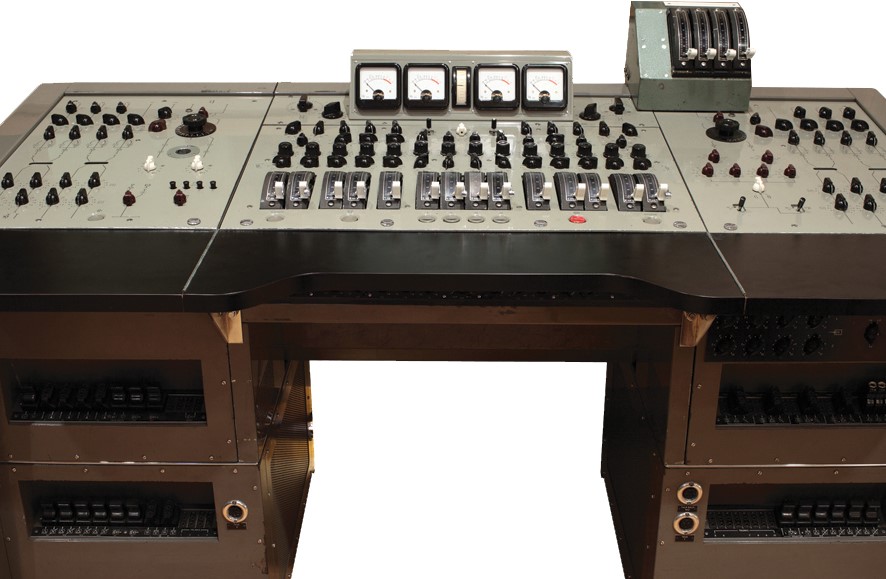 “Michelle” was the only song on the entire album that needed more than the four tracks on the recording console. The first session was utilized to fill the first four tracks, track one containing the rhythm track consisting of drums and acoustic guitars. Since this rhythm track only needed one take, a good amount of rehearsal was no doubt performed first in order to get the arrangement down perfectly. “Michelle” was the only song on the entire album that needed more than the four tracks on the recording console. The first session was utilized to fill the first four tracks, track one containing the rhythm track consisting of drums and acoustic guitars. Since this rhythm track only needed one take, a good amount of rehearsal was no doubt performed first in order to get the arrangement down perfectly.
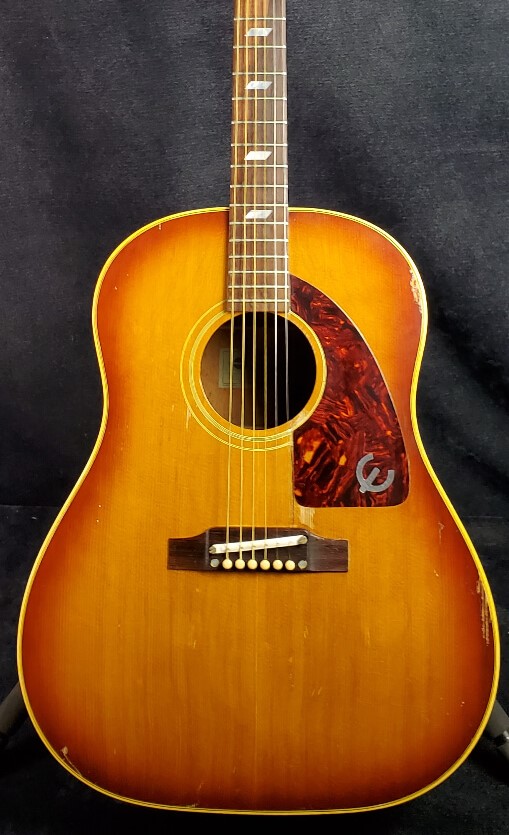 From listening to Paul’s previously recorded demo of the song on acoustic guitar, we can easily assume that Paul played one of the acoustic guitars himself on this rhythm track since the ascending and descending jazz chords in the fourth measure of the verses were already perfected by him previously. According to Andy Babiuk's book "Beatles Gear," "Photographs taken while they worked on 'Michelle' show capos on McCartney's Epiphone Texan, on Harrison's J-160E and on Lennon's Spanish classical guitar," this hand-made Spanish guitar being purchased by John from its maker in Madrid, Spain on July 2nd, 1965, while The Beatles were on tour. The capos they used on their acoustic guitars as mentioned in the above quote were needed to lift the key of the song, a device they rarely used before but now used on many "Rubber Soul" tracks. From listening to Paul’s previously recorded demo of the song on acoustic guitar, we can easily assume that Paul played one of the acoustic guitars himself on this rhythm track since the ascending and descending jazz chords in the fourth measure of the verses were already perfected by him previously. According to Andy Babiuk's book "Beatles Gear," "Photographs taken while they worked on 'Michelle' show capos on McCartney's Epiphone Texan, on Harrison's J-160E and on Lennon's Spanish classical guitar," this hand-made Spanish guitar being purchased by John from its maker in Madrid, Spain on July 2nd, 1965, while The Beatles were on tour. The capos they used on their acoustic guitars as mentioned in the above quote were needed to lift the key of the song, a device they rarely used before but now used on many "Rubber Soul" tracks.
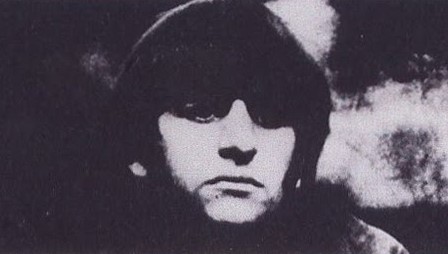 Ringo, surprisingly, went back to using his 1964 Ludwig drum kit (his third Ludwig set) instead of his newer 1965 kit he had used during the “Rubber Soul” sessions so far. He never went back to his 1965 set during his time with The Beatles but kept it nonetheless for safe keeping. (Since three acoustic guitars and drums were recorded live for this rhythm track, Ian MacDonald’s suggestion that Paul performed the entire song with overdubs, as indicated in his book “Revolution In The Head,” is found to be inaccurate.) Ringo, surprisingly, went back to using his 1964 Ludwig drum kit (his third Ludwig set) instead of his newer 1965 kit he had used during the “Rubber Soul” sessions so far. He never went back to his 1965 set during his time with The Beatles but kept it nonetheless for safe keeping. (Since three acoustic guitars and drums were recorded live for this rhythm track, Ian MacDonald’s suggestion that Paul performed the entire song with overdubs, as indicated in his book “Revolution In The Head,” is found to be inaccurate.)
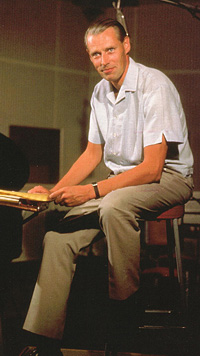 Many have noticed that the tempo of the rhythm track slows down at the end, which is usually believed to be accidental. “It slows down on the last part,” McCartney corrects, “only because we thought it sounded better that way.” In the 2021 Hulu series "McCartney 3,2,1," Paul explains: "At this point is slows down a little. No one could figure that out. It was our attempt to be like the (Edith Piaf) 'Milord' record where she slows...but we didn't dare do that. So we just sort of (slowed down) a little bit. It just sounds like we got it wrong." George Martin concurs, “Paul asked for the music to be slowed on the last part of ‘Michelle’ to add more emphasis to it. I think it achieves the desired effect.” Many have noticed that the tempo of the rhythm track slows down at the end, which is usually believed to be accidental. “It slows down on the last part,” McCartney corrects, “only because we thought it sounded better that way.” In the 2021 Hulu series "McCartney 3,2,1," Paul explains: "At this point is slows down a little. No one could figure that out. It was our attempt to be like the (Edith Piaf) 'Milord' record where she slows...but we didn't dare do that. So we just sort of (slowed down) a little bit. It just sounds like we got it wrong." George Martin concurs, “Paul asked for the music to be slowed on the last part of ‘Michelle’ to add more emphasis to it. I think it achieves the desired effect.”
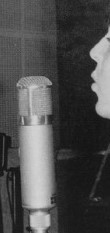 The remaining three tracks of the four track tape were filled with overdubs before the first recording session was completed. Track two contained Paul’s lead vocal, track three contained one set of three-part harmonies from John, Paul and George (as arranged by George Martin), and track four contained the same harmony vocals double-tracked to give a richer and fuller sound. Therefore, seven voices are heard on the finished song. In "McCartney 3,2,1," Paul explains: "You would think that we would have gotten together and worked out those harmonies. Of course, George Martin, our producer, was very helpful with that too. George would sort of say, 'OK, Paul, your line is...or whatever, and then he said, 'OK, George (Harrison), yours is...They would be strange little lines that are unrelated. We just had to remember them or else the grown-up would tell you off!" With all four tracks filled, a tape copy was made that combined both harmony vocal tracks (tracks three and four) onto track three. This left track four open for more overdubs in the second session of the day. The remaining three tracks of the four track tape were filled with overdubs before the first recording session was completed. Track two contained Paul’s lead vocal, track three contained one set of three-part harmonies from John, Paul and George (as arranged by George Martin), and track four contained the same harmony vocals double-tracked to give a richer and fuller sound. Therefore, seven voices are heard on the finished song. In "McCartney 3,2,1," Paul explains: "You would think that we would have gotten together and worked out those harmonies. Of course, George Martin, our producer, was very helpful with that too. George would sort of say, 'OK, Paul, your line is...or whatever, and then he said, 'OK, George (Harrison), yours is...They would be strange little lines that are unrelated. We just had to remember them or else the grown-up would tell you off!" With all four tracks filled, a tape copy was made that combined both harmony vocal tracks (tracks three and four) onto track three. This left track four open for more overdubs in the second session of the day.
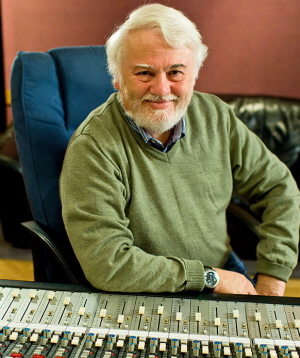 Jerry Boys, occasional tape operator on Beatles sessions, happened to come into the control room during Paul’s lead vocal performance. “I stood there quite spellbound,” Jerry Boys remembers. "It sounded lovely. George (Martin) asked me what I thought of The Beatles singing a song with French lyrics and I got the impression that with me being a young chap he was sounding me out, perhaps because they weren’t too sure themselves. I said it sounded very pleasant, which it certainly did!" Jerry Boys, occasional tape operator on Beatles sessions, happened to come into the control room during Paul’s lead vocal performance. “I stood there quite spellbound,” Jerry Boys remembers. "It sounded lovely. George (Martin) asked me what I thought of The Beatles singing a song with French lyrics and I got the impression that with me being a young chap he was sounding me out, perhaps because they weren’t too sure themselves. I said it sounded very pleasant, which it certainly did!"
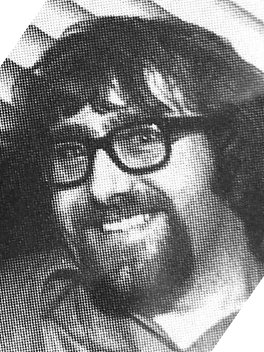 It was undoubtedly at this point, just as the afternoon session ended and the evening session began, that food was brought in for the group by their roadie Mal Evans. Photographic evidence shows mashed potatoes and peas being on their plates, as well as other food. Ringo even had a chance to participate in a card game with Mal and road manager Neil Aspinal on the studio floor, evidenced by photos taken from up in the control room. It was undoubtedly at this point, just as the afternoon session ended and the evening session began, that food was brought in for the group by their roadie Mal Evans. Photographic evidence shows mashed potatoes and peas being on their plates, as well as other food. Ringo even had a chance to participate in a card game with Mal and road manager Neil Aspinal on the studio floor, evidenced by photos taken from up in the control room.
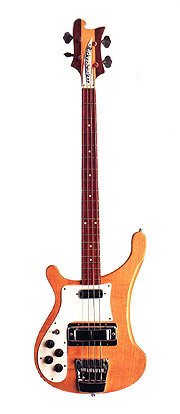 As was usually the case, arrangements to Beatles songs, as well as additions to the actual song structure, do occur even during the recording sessions. This was the case during the evening session on this day; first off concerning Paul’s overdubbed Rickenbacker bass part. “The bass line for this was thought up on the spot,” Paul remembers. "I would never have played ‘Michelle’ on bass until I had to record the bass line. Bass wasn’t an instrument you sat around and sung to. I remember that opening six-note phrase against the descending chords in ‘Michelle’ was like a great moment in my life. I think I had enough musical experience after years of playing, so it was just in me. I realized I could do that. It’s quite a well-known trick. I’m sure jazz players have done that." In McCartney 3,2,1," Paul elaborates: "It was good when I found that...Looking back, I astound myself!" As was usually the case, arrangements to Beatles songs, as well as additions to the actual song structure, do occur even during the recording sessions. This was the case during the evening session on this day; first off concerning Paul’s overdubbed Rickenbacker bass part. “The bass line for this was thought up on the spot,” Paul remembers. "I would never have played ‘Michelle’ on bass until I had to record the bass line. Bass wasn’t an instrument you sat around and sung to. I remember that opening six-note phrase against the descending chords in ‘Michelle’ was like a great moment in my life. I think I had enough musical experience after years of playing, so it was just in me. I realized I could do that. It’s quite a well-known trick. I’m sure jazz players have done that." In McCartney 3,2,1," Paul elaborates: "It was good when I found that...Looking back, I astound myself!"
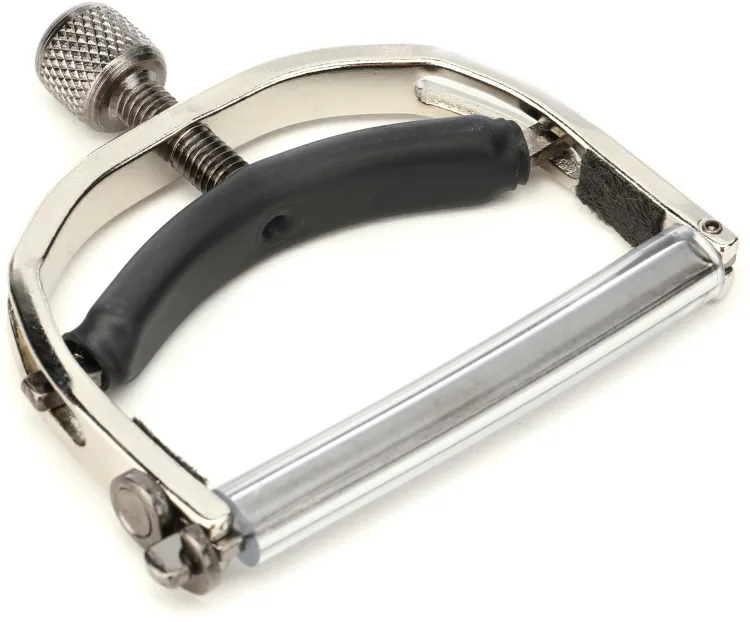 When being interviewed by Mark Lewisohn in 1987 for his inciteful book “The Beatles Recording Sessions,” Paul elaborates about this bass part a little further: “I’ll never forget putting the bass line in ‘Michelle’ because it was a kind of Bizet thing. It really turned the song around. You could do that with bass, it was very exciting." Photos during these sessions, possibly rehearsing "Michelle," show Paul playing his Rickenbacker bass with a capo, something quite unusual for a bass guitar. "I'd try anything once," Paul explains with a laugh, "So...I'll try a capo...I would just mess around with any experimental effect.” When being interviewed by Mark Lewisohn in 1987 for his inciteful book “The Beatles Recording Sessions,” Paul elaborates about this bass part a little further: “I’ll never forget putting the bass line in ‘Michelle’ because it was a kind of Bizet thing. It really turned the song around. You could do that with bass, it was very exciting." Photos during these sessions, possibly rehearsing "Michelle," show Paul playing his Rickenbacker bass with a capo, something quite unusual for a bass guitar. "I'd try anything once," Paul explains with a laugh, "So...I'll try a capo...I would just mess around with any experimental effect.”
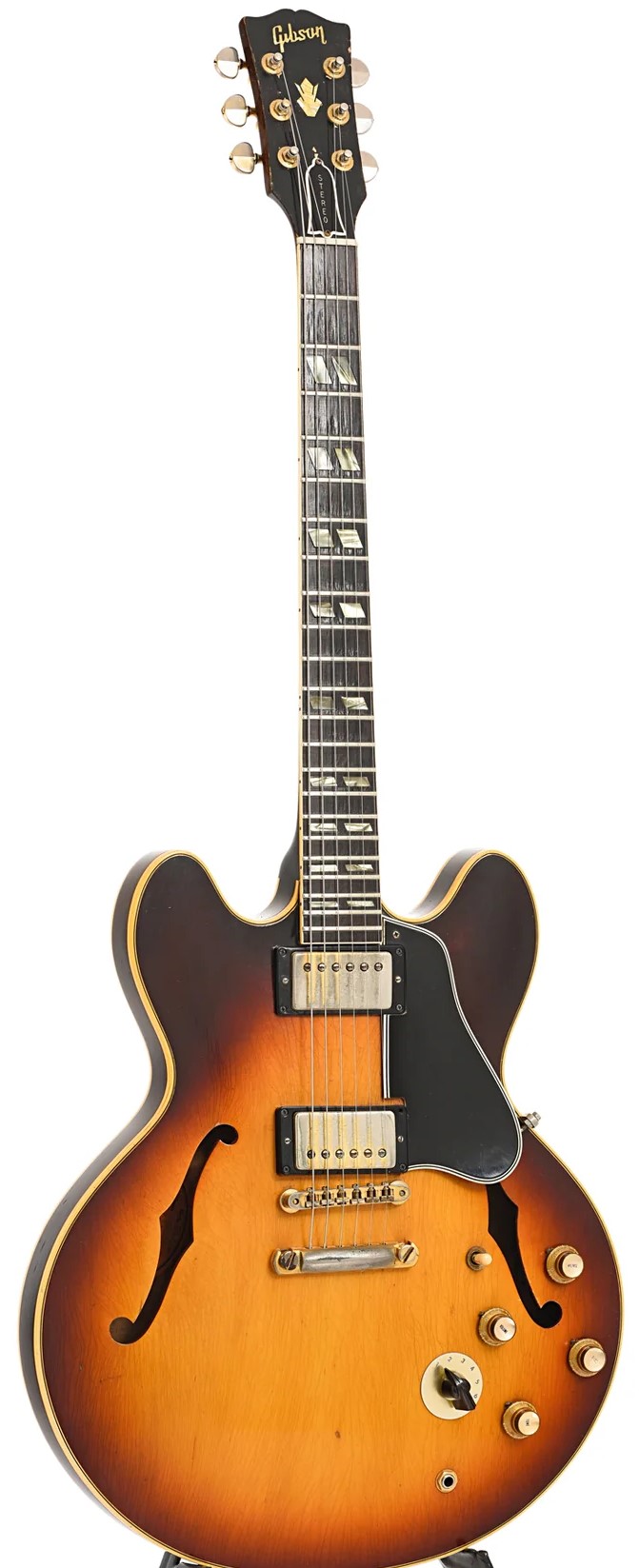 After the bass part was overdubbed, another acoustic rhythm guitar was overdubbed, as well as the lead guitar heard during the song's solo and conclusion. "The guitar solo in 'Michelle' is my composition, actually," George Martin stated in 1993. "I wrote down the notes and said, 'I'll play this; George, you can do these notes with me on guitar. We'll play in unison.'" Since no keyboards can be heard on the recording, the unison piano work of George Martin was most likely played off microphone. The tone of George Harrison's guitar used for this solo is said to have been his newly acquired Gibson ES-345 electric, dispite Andy Babiuk's insistance in "Beatles Gear" that the guitar was only used in promo films and during the group's final British tour in November and December of 1965. These overdubs were put onto track four of the new tape which then concluded the recording of the song at 11:30 pm. After the bass part was overdubbed, another acoustic rhythm guitar was overdubbed, as well as the lead guitar heard during the song's solo and conclusion. "The guitar solo in 'Michelle' is my composition, actually," George Martin stated in 1993. "I wrote down the notes and said, 'I'll play this; George, you can do these notes with me on guitar. We'll play in unison.'" Since no keyboards can be heard on the recording, the unison piano work of George Martin was most likely played off microphone. The tone of George Harrison's guitar used for this solo is said to have been his newly acquired Gibson ES-345 electric, dispite Andy Babiuk's insistance in "Beatles Gear" that the guitar was only used in promo films and during the group's final British tour in November and December of 1965. These overdubs were put onto track four of the new tape which then concluded the recording of the song at 11:30 pm.
 The first mono and stereo mixes of “Michelle” were performed on November 9th, 1965 in Room 65 of EMI Studios by George Martin and engineers Norman Smith and Jerry Boys. The drums were mixed slightly louder on the mono mix and it had a slightly longer fade at the end. The stereo mix had Paul's lead vocals panned exclusively to the right channel. Both of these mixes made it onto the US versions of the "Rubber Soul" album. The first mono and stereo mixes of “Michelle” were performed on November 9th, 1965 in Room 65 of EMI Studios by George Martin and engineers Norman Smith and Jerry Boys. The drums were mixed slightly louder on the mono mix and it had a slightly longer fade at the end. The stereo mix had Paul's lead vocals panned exclusively to the right channel. Both of these mixes made it onto the US versions of the "Rubber Soul" album.
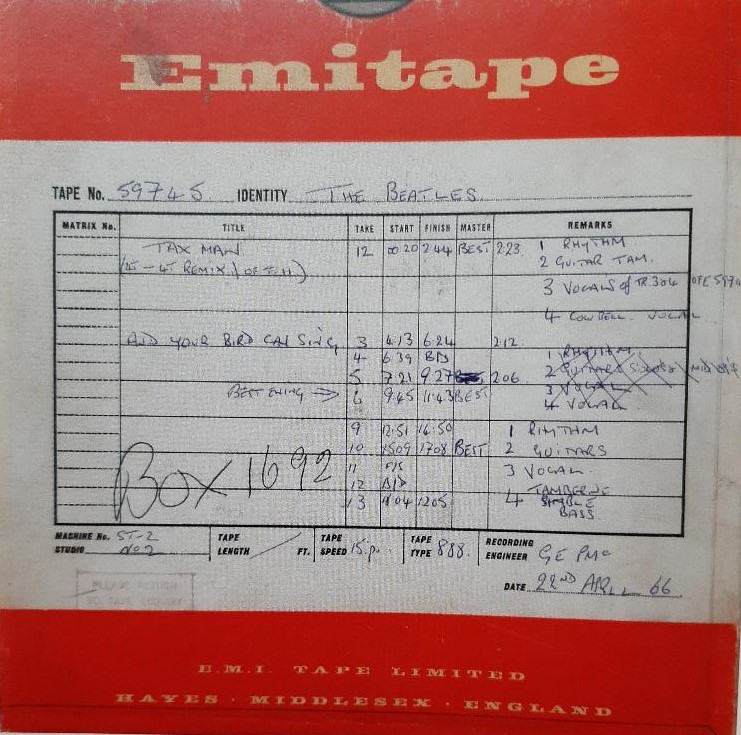 Paul was apparently present for these mixes as he remembers them quite well: “I remember ‘Michelle’ particularly. Because it was only on four little tracks, it was very easy to mix. There were no decisions to make, we’d made them all in the writing and in the recording. We would mix them, and it would take half an hour, maybe. Then it would go up on a shelf, in a quarter-inch tape box. And that was it. That was the only thing we ever did to ‘Michelle.’ We never remixed it for dance, we never did a funky mix. That was the end of it and it’s still around and it’s still a popular song, still clocking up numbers on the little tachometer or whatever it is they’ve got: four million broadcast performances. From that one little thing. Minimum effort, minimum expense, minimum everything. It’s lovely, absolutely the best way to do it.” Paul was apparently present for these mixes as he remembers them quite well: “I remember ‘Michelle’ particularly. Because it was only on four little tracks, it was very easy to mix. There were no decisions to make, we’d made them all in the writing and in the recording. We would mix them, and it would take half an hour, maybe. Then it would go up on a shelf, in a quarter-inch tape box. And that was it. That was the only thing we ever did to ‘Michelle.’ We never remixed it for dance, we never did a funky mix. That was the end of it and it’s still around and it’s still a popular song, still clocking up numbers on the little tachometer or whatever it is they’ve got: four million broadcast performances. From that one little thing. Minimum effort, minimum expense, minimum everything. It’s lovely, absolutely the best way to do it.”
 On November 15th, 1965, during further mixing work for the “Rubber Soul” album, George Martin and Norman Smith, with 2nd engineer Richard Lush, created one more mono mix of “Michelle,” which ended up being used on the British mono version of "Rubber Soul." This mix took place in the control room of EMI Studio One. On November 15th, 1965, during further mixing work for the “Rubber Soul” album, George Martin and Norman Smith, with 2nd engineer Richard Lush, created one more mono mix of “Michelle,” which ended up being used on the British mono version of "Rubber Soul." This mix took place in the control room of EMI Studio One.
A new stereo mix was made in 1986 by George Martin for the first appearance of “Rubber Soul” on compact disc. This mix, which centered Paul's lead vocals, was also utilized when the CD was remastered and re-released on September 9th, 2009.
 Giles Martin was given the task in 2023 of creating a "demix remix" of "Michelle" for inclusion on the 50th Anniversary edition of the compilation album "The Beatles / 1962 - 1966" (aka "The Red Album"). With Peter Jackson's AI technology at his disposal, Giles Martin was able to utilize this "new machine-learning techology" so that "individual elements that were put to tape...and were therefore impossible to separate" could be "untangled, allowing Giles (Martin) to put the original recordings back together with even greater clarity and impact," as stated by John Harris in the liner notes of the above mentioned album. This is arguably the best stereo mix of "Michelle" yet, with Paul's rhythm guitar primarily in the right channel and George's lead guitar work primarily in the left channel along with Ringo's snapping rim shots. Giles Martin was given the task in 2023 of creating a "demix remix" of "Michelle" for inclusion on the 50th Anniversary edition of the compilation album "The Beatles / 1962 - 1966" (aka "The Red Album"). With Peter Jackson's AI technology at his disposal, Giles Martin was able to utilize this "new machine-learning techology" so that "individual elements that were put to tape...and were therefore impossible to separate" could be "untangled, allowing Giles (Martin) to put the original recordings back together with even greater clarity and impact," as stated by John Harris in the liner notes of the above mentioned album. This is arguably the best stereo mix of "Michelle" yet, with Paul's rhythm guitar primarily in the right channel and George's lead guitar work primarily in the left channel along with Ringo's snapping rim shots.
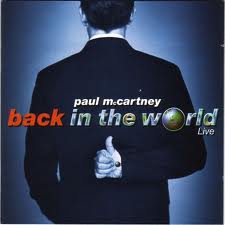 A further recording of the song was done sometime between March 22nd and June 15th of 1993 during Paul McCartney’s “New World Tour.” This version of “Michelle” was included on his live album “Paul Is Live.” It was also recorded during a live performance in Mexico City, the results appearing on the international release “Back In The World” (which did not get released in the US). A further recording of the song was done sometime between March 22nd and June 15th of 1993 during Paul McCartney’s “New World Tour.” This version of “Michelle” was included on his live album “Paul Is Live.” It was also recorded during a live performance in Mexico City, the results appearing on the international release “Back In The World” (which did not get released in the US).
Song Structure and Style
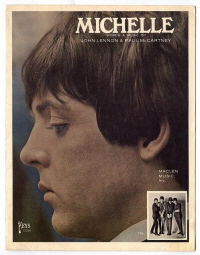 While “Michelle” has an irresistibly effective melody and chord structure, when analyzed, we may be surprised to find some offbeat idiosyncrasies. While containing the standard fare of verses, bridges and solos, the number of measures in each element is quite unique within The Beatles catalog up to this point. Nonetheless, the song comprises the following format: ‘verse/ verse/ bridge/ verse/ bridge/ verse (solo)/ bridge/ verse’ (or aabababa). Other familiar features are an introduction and conclusion with a fade-out. While “Michelle” has an irresistibly effective melody and chord structure, when analyzed, we may be surprised to find some offbeat idiosyncrasies. While containing the standard fare of verses, bridges and solos, the number of measures in each element is quite unique within The Beatles catalog up to this point. Nonetheless, the song comprises the following format: ‘verse/ verse/ bridge/ verse/ bridge/ verse (solo)/ bridge/ verse’ (or aabababa). Other familiar features are an introduction and conclusion with a fade-out.
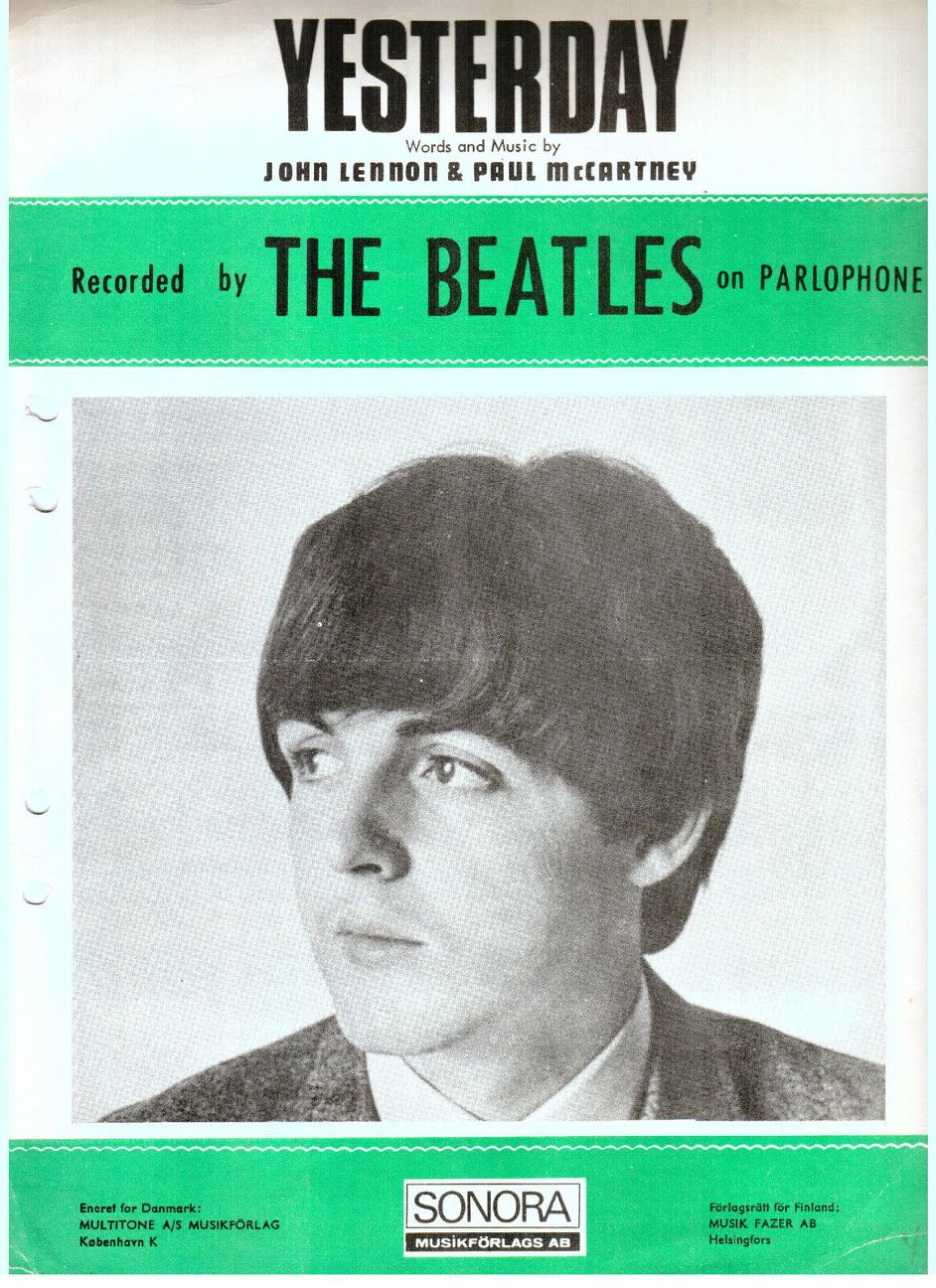 It’s interesting to note, first off, that the song is in the key of F, which is also quite unusual for the group. McCartney is the only Beatle to work with this key, as he had done a few months earlier on his first ground-breaking ballad of the year, namely “Yesterday,” as well as 1963’s “Hold Me Tight.” His other crooner from that year, their cover of “Till There Was You,” even shares the same “ham-fisted” jazz chord described above. One thing that is usual, though, is Paul’s wavering from major to minor, the verses displaying F major as the home key while the bridges are constructed around F minor. But, since we know that the origin of the song consisted of the verse only, we can easily identify the song as being in F major. It’s interesting to note, first off, that the song is in the key of F, which is also quite unusual for the group. McCartney is the only Beatle to work with this key, as he had done a few months earlier on his first ground-breaking ballad of the year, namely “Yesterday,” as well as 1963’s “Hold Me Tight.” His other crooner from that year, their cover of “Till There Was You,” even shares the same “ham-fisted” jazz chord described above. One thing that is usual, though, is Paul’s wavering from major to minor, the verses displaying F major as the home key while the bridges are constructed around F minor. But, since we know that the origin of the song consisted of the verse only, we can easily identify the song as being in F major.
The proceedings begin with a four-measure introduction which premier a fragrant descending acoustic guitar riff spiced with an overdubbed Bizet-like bass line. As we are soon to see, this introduction is actually the last four measures of the bridge, not to mention that it will also reappear as the final word in the conclusion.
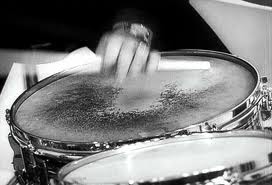 Immediately afterward, the first six-measure verse begins with the simple cross-stick drum beat and vocals appearing precisely on the downbeat. Another element that emerges simultaneously here is the six-voice “oooh” harmonies that add a very dreamy backdrop throughout the song. This verse is then repeated identically lyrically and all, the only noted difference is that measures three through five in the first verse give the lyrical phrase in English (“These are words that go together well”) while the second verse repeat it in French (“Sont les mots qui vont tres bien ensemble”). The only other difference is Paul’s reiterating “my Michelle” in the first verse and him repeating “tres bien ensemble” in the second verse. Immediately afterward, the first six-measure verse begins with the simple cross-stick drum beat and vocals appearing precisely on the downbeat. Another element that emerges simultaneously here is the six-voice “oooh” harmonies that add a very dreamy backdrop throughout the song. This verse is then repeated identically lyrically and all, the only noted difference is that measures three through five in the first verse give the lyrical phrase in English (“These are words that go together well”) while the second verse repeat it in French (“Sont les mots qui vont tres bien ensemble”). The only other difference is Paul’s reiterating “my Michelle” in the first verse and him repeating “tres bien ensemble” in the second verse.
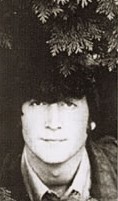 The first bridge then occurs, which is uncharacteristically ten measures long. This is where the song shifts to a minor key, which convincingly depicts the singer’s frustration at not being able to express his love accurately. The first two measures, which contain Lennon’s anguished “I love you, I love you, I love you” lyrics, are sung by Paul without the distraction of background vocals. This effective vocal element reaches the highest register of the song and stands out as an emotional highlight. This is followed by the return of background harmonies and the touching lyrical impact of Paul’s line “that’s all I want to say.” The first bridge then occurs, which is uncharacteristically ten measures long. This is where the song shifts to a minor key, which convincingly depicts the singer’s frustration at not being able to express his love accurately. The first two measures, which contain Lennon’s anguished “I love you, I love you, I love you” lyrics, are sung by Paul without the distraction of background vocals. This effective vocal element reaches the highest register of the song and stands out as an emotional highlight. This is followed by the return of background harmonies and the touching lyrical impact of Paul’s line “that’s all I want to say.”
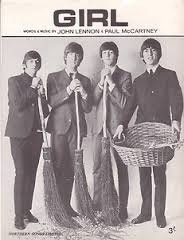 The bridge concludes with a repeat of the introductory passage but with a mostly single-note melody line on the lyrics “I will say the only words I know that you’ll understand.” Most likely, we see in this melody line the hand of Lennon, since he habitually kept melody lines to one note, such as in both “Help!” and “Girl” which were both written in the same year. The bridge concludes with a repeat of the introductory passage but with a mostly single-note melody line on the lyrics “I will say the only words I know that you’ll understand.” Most likely, we see in this melody line the hand of Lennon, since he habitually kept melody lines to one note, such as in both “Help!” and “Girl” which were both written in the same year.
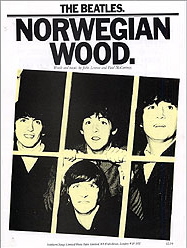 Next we see a carbon-copy repeat of the second verse, followed by a second bridge. While most Beatles bridges are lyrically the same (witness “You Won’t See Me” and “Ticket To Ride” as recent examples), Paul continues the narrative in “Michelle” right through the bridges by changing the lyrics to “I need to, I need to, I need to…etc.” This rather new pattern is beginning to see consistency as of 1965, such as in “Norwegian Wood” and “The Word,” both of which differ the lyrics in successive bridges. Next we see a carbon-copy repeat of the second verse, followed by a second bridge. While most Beatles bridges are lyrically the same (witness “You Won’t See Me” and “Ticket To Ride” as recent examples), Paul continues the narrative in “Michelle” right through the bridges by changing the lyrics to “I need to, I need to, I need to…etc.” This rather new pattern is beginning to see consistency as of 1965, such as in “Norwegian Wood” and “The Word,” both of which differ the lyrics in successive bridges.
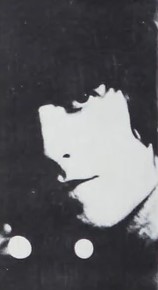 We then move into the solo section of the song which is performed on top of the verse chord pattern. Paul first adds a nice touch by forcefully emphasizing the simple phrase he longs for Michelle to hear, namely “I love you.” While this stretches through the first three measures, the background harmonies continue to ring out behind the beautiful George Harrison electric guitar solo. We then move into the solo section of the song which is performed on top of the verse chord pattern. Paul first adds a nice touch by forcefully emphasizing the simple phrase he longs for Michelle to hear, namely “I love you.” While this stretches through the first three measures, the background harmonies continue to ring out behind the beautiful George Harrison electric guitar solo.
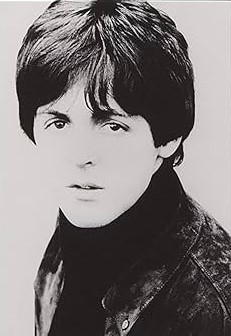 This is then followed by the final bridge which also has a different set of lyrics. “I want you, I want you, I want you” is painfully exclaimed this time around with the desire for her to “understand.” We then repeat the second verse a third time, ending with Paul enunciating every consonant of the word “ensemble.” This is then followed by the final bridge which also has a different set of lyrics. “I want you, I want you, I want you” is painfully exclaimed this time around with the desire for her to “understand.” We then repeat the second verse a third time, ending with Paul enunciating every consonant of the word “ensemble.”
An emotive conclusion then appears which repeats the opening guitar passage for the last time, the difference here being that the single-note melody line sung by Paul is replaced with one that portrays an exhaustive resolve that he’ll just have to keep trying to “say the only words” he knows to get through to her. This final melodic stroke becomes the spine-tingling climax of the song. After the background harmonies return for the last time on the words “my Michelle,” the song then fades into the distance by repeating the solo section in a slightly slower tempo for emphasis. Breathtaking.
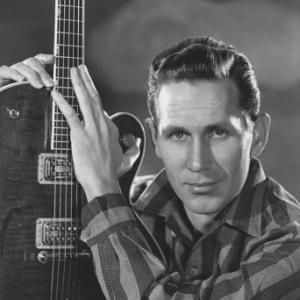 Paul is obviously the major player here, playing bass guitar and performing at least two acoustic guitar parts, as well as lead and harmony vocals. His original Chet Atkins-like guitar parts are somewhat de-emphasized by the other elements in the arrangement, although his classy ascending and descending jazz chords in the first verse and conclusion are clearly heard and impressive. His bass work stays suitably simple throughout the verses while the walking bass lines of the bridges move the song along nicely. And Paul knows how to create a vocal image that makes us feel like we’re witnessing this frustrated appeal to a French girl, doing it pitch-perfect as usual. Paul is obviously the major player here, playing bass guitar and performing at least two acoustic guitar parts, as well as lead and harmony vocals. His original Chet Atkins-like guitar parts are somewhat de-emphasized by the other elements in the arrangement, although his classy ascending and descending jazz chords in the first verse and conclusion are clearly heard and impressive. His bass work stays suitably simple throughout the verses while the walking bass lines of the bridges move the song along nicely. And Paul knows how to create a vocal image that makes us feel like we’re witnessing this frustrated appeal to a French girl, doing it pitch-perfect as usual.
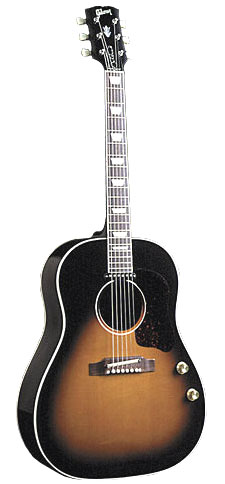 George also follows suit with a nice initial acoustic guitar track and performs satisfying well-rehearsed electric guitar solos in the song. John’s acoustic guitar work is hardly discernible on the finished song, his true involvement being as harmony vocalist, which is also done superbly with George and Paul following the expert precision of George Martin’s arrangement. While it is true that Ringo doesn’t shine on this track, he once again can be counted on to do exactly what needs to be done to make a well written song a success. George also follows suit with a nice initial acoustic guitar track and performs satisfying well-rehearsed electric guitar solos in the song. John’s acoustic guitar work is hardly discernible on the finished song, his true involvement being as harmony vocalist, which is also done superbly with George and Paul following the expert precision of George Martin’s arrangement. While it is true that Ringo doesn’t shine on this track, he once again can be counted on to do exactly what needs to be done to make a well written song a success.
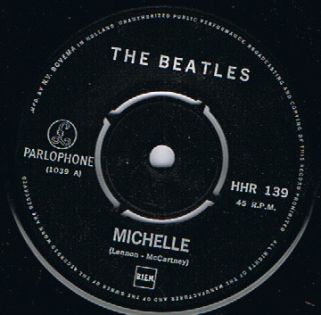 Combined with a masterfully written melody line, the simple lyrics come across with the sentiment of Shakespeare. The quaint lyrics simply tell of an English-speaking man who desperately wants to tell a beautiful (“ma belle” translates as “my beautiful”) French-speaking woman that he loves her. He may not have developed the story any further than this, but there was no need. As the song concludes, the listener is left wondering whether he ever did “find a way” to get the message through. Combined with a masterfully written melody line, the simple lyrics come across with the sentiment of Shakespeare. The quaint lyrics simply tell of an English-speaking man who desperately wants to tell a beautiful (“ma belle” translates as “my beautiful”) French-speaking woman that he loves her. He may not have developed the story any further than this, but there was no need. As the song concludes, the listener is left wondering whether he ever did “find a way” to get the message through.
 Not to burst any bubbles, but there is one thing that suggests Paul should have put a little more work into the lyrics. After all, we’re to believe that the only French words he knows are translated “these are words that go together well”? I don’t know about you, but I don’t think any woman could be wooed by that sentence, even if you’re Paul McCartney. Hadn’t he ever heard of the word “amour”? Not to burst any bubbles, but there is one thing that suggests Paul should have put a little more work into the lyrics. After all, we’re to believe that the only French words he knows are translated “these are words that go together well”? I don’t know about you, but I don’t think any woman could be wooed by that sentence, even if you’re Paul McCartney. Hadn’t he ever heard of the word “amour”?
American Releases
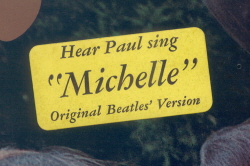 December 6th, 1965, was the first that America heard of “Michelle” as the last cut on side one of the “Rubber Soul” album. The very first mono mix of the song, as created on November 9th, 1965, was included on the mono copies of this album, which was slightly different than what appeared on the British mono release. Because of the popularity of the song on the radio, by The Beatles and the duo David & Jonathan (aka songwriters Roger Greenaway and Roger Cook), Capitol saw fit to affix stickers to the front of the albums to let buyers know this was the only way to own a copy of the song as sung by Paul. No doubt, this was a major contributing factor to the album selling six million copies in the US alone, which was double their previous album “Help!” Capitol's version of "Rubber Soul" was released on an individual compact disc on January 21st, 2014, both the mono and stereo versions of the album contained on a single CD. December 6th, 1965, was the first that America heard of “Michelle” as the last cut on side one of the “Rubber Soul” album. The very first mono mix of the song, as created on November 9th, 1965, was included on the mono copies of this album, which was slightly different than what appeared on the British mono release. Because of the popularity of the song on the radio, by The Beatles and the duo David & Jonathan (aka songwriters Roger Greenaway and Roger Cook), Capitol saw fit to affix stickers to the front of the albums to let buyers know this was the only way to own a copy of the song as sung by Paul. No doubt, this was a major contributing factor to the album selling six million copies in the US alone, which was double their previous album “Help!” Capitol's version of "Rubber Soul" was released on an individual compact disc on January 21st, 2014, both the mono and stereo versions of the album contained on a single CD.
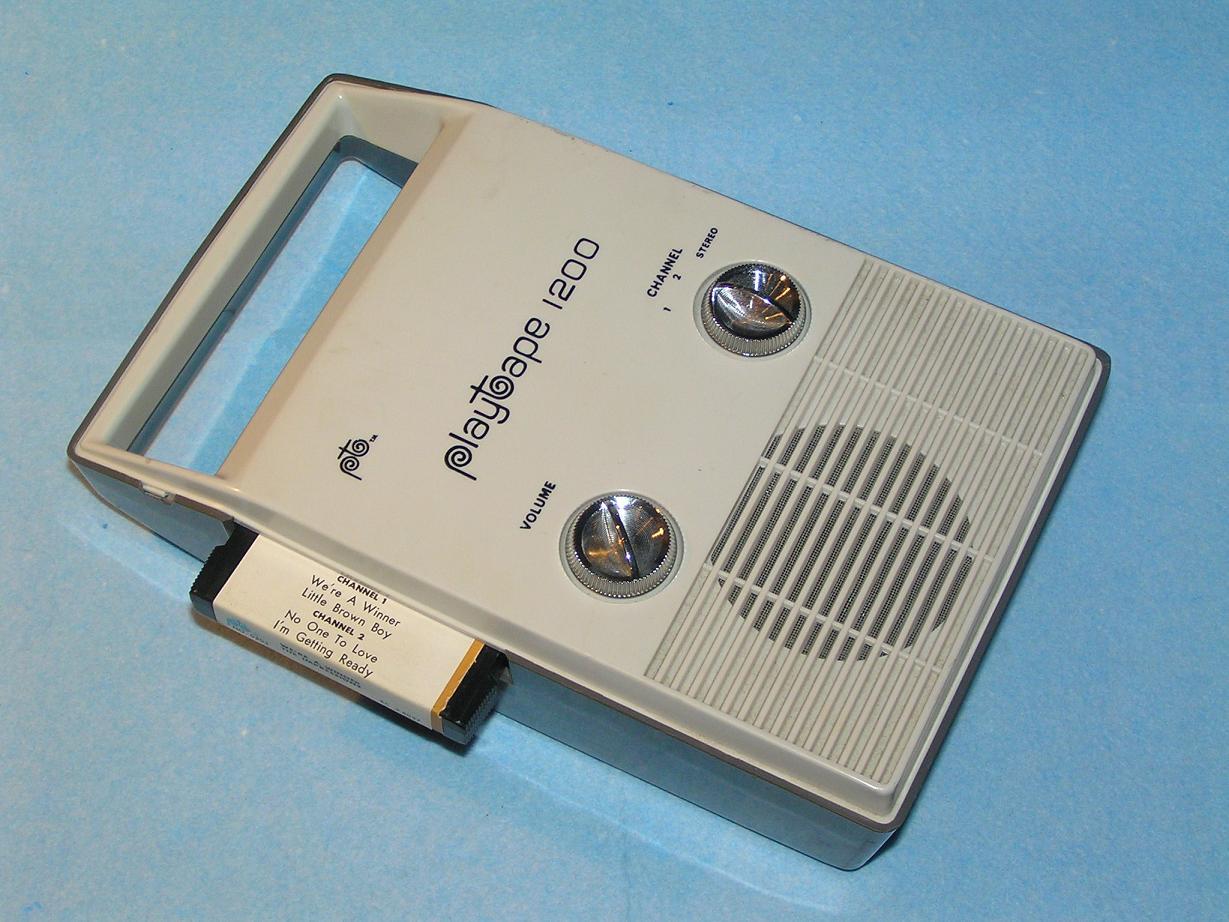 Sometime in 1967, Capitol released Beatles music on a brand new but short-lived format called "Playtapes." These tape cartridges did not have the capability to include entire albums, so two truncated four-song versions of "Rubber Soul" were released in this portable format, "Michelle" being on one of these. These "Playtapes" are highly collectable today. Sometime in 1967, Capitol released Beatles music on a brand new but short-lived format called "Playtapes." These tape cartridges did not have the capability to include entire albums, so two truncated four-song versions of "Rubber Soul" were released in this portable format, "Michelle" being on one of these. These "Playtapes" are highly collectable today.
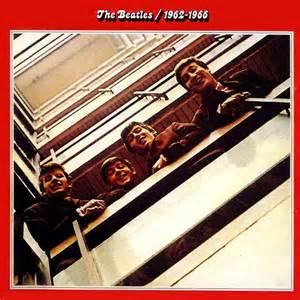 On April 2nd, 1973, the first official US Beatles compilation album was released, this being the double set “The Beatles/1962-1966,” affectionately known as “The Red Album.” Only seven of its twenty-six songs were not available as singles, this being an unquestioned candidate. At this point, the stereo mix with Paul’s vocals on the right channel only was still being used. This album was first released on compact disc on September 20th, 1993, George Martin's 1986 stereo mix being included therein. A remastered version of this release was then issued on August 10th, 2010. On April 2nd, 1973, the first official US Beatles compilation album was released, this being the double set “The Beatles/1962-1966,” affectionately known as “The Red Album.” Only seven of its twenty-six songs were not available as singles, this being an unquestioned candidate. At this point, the stereo mix with Paul’s vocals on the right channel only was still being used. This album was first released on compact disc on September 20th, 1993, George Martin's 1986 stereo mix being included therein. A remastered version of this release was then issued on August 10th, 2010.
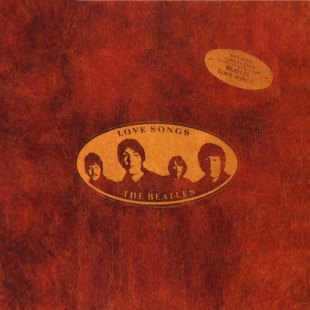 Even though "Michelle" was contained on the compilation album above, they couldn’t resist including it again on the October 21st, 1977 released double-album compilation “Love Songs.” This time around, the right channel of the stereo mix was brought over to have Paul’s lead vocals present in both channels, this being done by Capitol and not by EMI. Even though "Michelle" was contained on the compilation album above, they couldn’t resist including it again on the October 21st, 1977 released double-album compilation “Love Songs.” This time around, the right channel of the stereo mix was brought over to have Paul’s lead vocals present in both channels, this being done by Capitol and not by EMI.
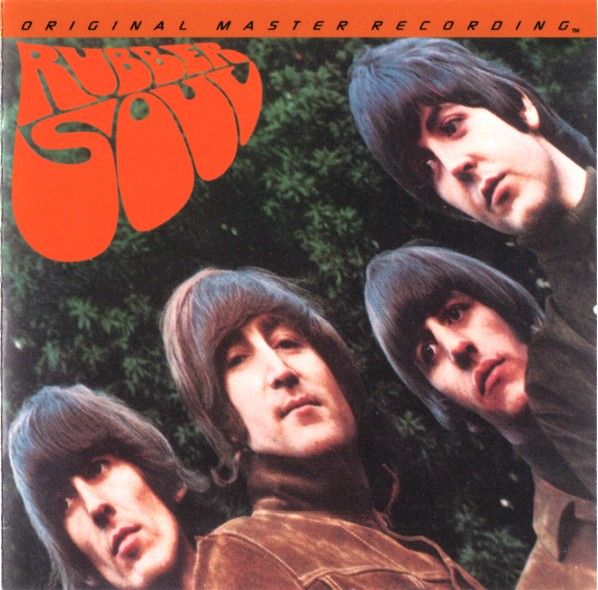 The first time the original British "Rubber Soul” album was made available in the US was the "Original Master Recording" vinyl edition released through Mobile Fidelity Sound Lab in June of 1984. This album included "Michelle" and was prepared utilizing half-speed mastering technology from the original master tape on loan from EMI. This version of the album was only available for a short time and is quite collectible today. The first time the original British "Rubber Soul” album was made available in the US was the "Original Master Recording" vinyl edition released through Mobile Fidelity Sound Lab in June of 1984. This album included "Michelle" and was prepared utilizing half-speed mastering technology from the original master tape on loan from EMI. This version of the album was only available for a short time and is quite collectible today.
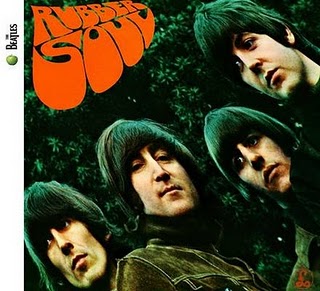 In 1986, George Martin broke out the original session tapes to create new stereo mixes for the entire “Rubber Soul” album for its first compact disc release on April 30th, 1987, the vinyl edition coming out on July 21st, 1987. George made sure Paul’s vocals were centered on “Michelle” and this mix continues to be available on the remastered re-release of the CD which came out on September 9th, 2009, the remastered vinyl edition coming out on November 13th, 2012. In 1986, George Martin broke out the original session tapes to create new stereo mixes for the entire “Rubber Soul” album for its first compact disc release on April 30th, 1987, the vinyl edition coming out on July 21st, 1987. George made sure Paul’s vocals were centered on “Michelle” and this mix continues to be available on the remastered re-release of the CD which came out on September 9th, 2009, the remastered vinyl edition coming out on November 13th, 2012.
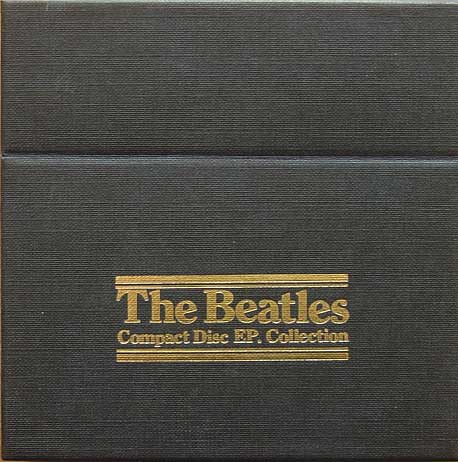 June 30th, 1992 was the date the CD box set “Compact Disc EP Collection” was released. This contained the November 15th, 1965 mono mix of “Michelle” as originally released in Britain on the “Rubber Soul” album as well as the “Nowhere Man” EP. June 30th, 1992 was the date the CD box set “Compact Disc EP Collection” was released. This contained the November 15th, 1965 mono mix of “Michelle” as originally released in Britain on the “Rubber Soul” album as well as the “Nowhere Man” EP.
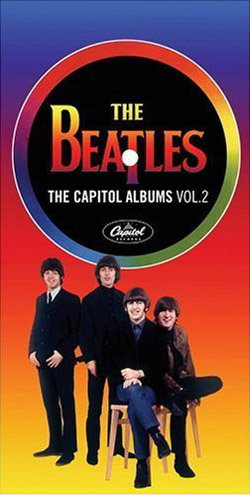 On April 11th, 2006, the box set “The Capitol Albums, Vol. 2” was released that included the entire “Rubber Soul” album as originally released in the US in December of 1965. Not only is the original stereo mix of “Michelle” included therein, but the very first mono mix from November 9th, 1965 is contained here which is the only place an avid Beatlemaniac can hear this mix other than from an original mono copy of the American album. BUYERS BEWARE! Let it be known that the first prints of this box set accidentally included a “fold-down” mono mix of the song created from combining both channels of the stereo mix. On April 11th, 2006, the box set “The Capitol Albums, Vol. 2” was released that included the entire “Rubber Soul” album as originally released in the US in December of 1965. Not only is the original stereo mix of “Michelle” included therein, but the very first mono mix from November 9th, 1965 is contained here which is the only place an avid Beatlemaniac can hear this mix other than from an original mono copy of the American album. BUYERS BEWARE! Let it be known that the first prints of this box set accidentally included a “fold-down” mono mix of the song created from combining both channels of the stereo mix.
Therefore what these unfortunate consumers purchased was not the original mono mixes of the “Rubber Soul” album. If you decide to purchase a used copy of this box set, you take your chances. You should definitely buy new.
 Also released on September 9th, 2009 was the CD box set “The Beatles In Mono,” which included the entire Beatles catalog with the original mono mixes from the 60’s. The November 15th, 1965 mono mix of “Michelle” was included in this set as well as the original stereo mix with Paul’s vocals only on the right channel. The vinyl edition of this box set was first released on September 9th, 2014. The November 9th, 1965 mono mix can only be heard on CD on “The Capitol Albums, Vol. 2” as indicated above. Also released on September 9th, 2009 was the CD box set “The Beatles In Mono,” which included the entire Beatles catalog with the original mono mixes from the 60’s. The November 15th, 1965 mono mix of “Michelle” was included in this set as well as the original stereo mix with Paul’s vocals only on the right channel. The vinyl edition of this box set was first released on September 9th, 2014. The November 9th, 1965 mono mix can only be heard on CD on “The Capitol Albums, Vol. 2” as indicated above.
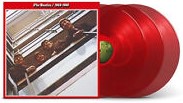 A special 50th Anniversay edition of the compilation album "The Beatles / 1962 - 1966" (aka "The Red Album") was released on November 10th, 2023, the new stereo mix of "Michelle," as detailed above, being included. This expanded release included 12 additional songs for a total of 38 tracks, and was made available as a double CD and as a triple vinyl release on both black and red vinyl.. A special 50th Anniversay edition of the compilation album "The Beatles / 1962 - 1966" (aka "The Red Album") was released on November 10th, 2023, the new stereo mix of "Michelle," as detailed above, being included. This expanded release included 12 additional songs for a total of 38 tracks, and was made available as a double CD and as a triple vinyl release on both black and red vinyl..
One live Paul McCartney album includes “Michelle” as well. The November 15th, 1993 released “Paul Is Live” contains the song from his “New World Tour” of that year.
Live Performances
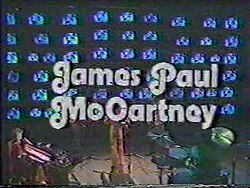 The Beatles never attempted to recreate their studio recording of “Michelle” on stage, continuing instead to include its predecessor “Yesterday” as their token ballad throughout their final 1966 tour. The first time McCartney performed "Michelle" as a solo artist was sometime in February or March of 1973 while filming a segment for his TV special "James Paul McCartney" at ATV Elstree Studios in Borehamwood, Hertfordshire, England. Paul played the song as part of an acoustic medley while wife Linda acted as photographer, this TV special being broadcast in America on April 16th, 1973. The Beatles never attempted to recreate their studio recording of “Michelle” on stage, continuing instead to include its predecessor “Yesterday” as their token ballad throughout their final 1966 tour. The first time McCartney performed "Michelle" as a solo artist was sometime in February or March of 1973 while filming a segment for his TV special "James Paul McCartney" at ATV Elstree Studios in Borehamwood, Hertfordshire, England. Paul played the song as part of an acoustic medley while wife Linda acted as photographer, this TV special being broadcast in America on April 16th, 1973.
 Paul periodically included this song in his live set lists, starting on February 18th, 1993 at the Forum di Assago in Milan, Italy, which began his “New World Tour.” Paul worked up the song with his new band for his “Driving Mexico” and “Driving Japan” tours in November of 2002. He then included it in his 2003 European “Back In The World Tour.” Paul periodically included this song in his live set lists, starting on February 18th, 1993 at the Forum di Assago in Milan, Italy, which began his “New World Tour.” Paul worked up the song with his new band for his “Driving Mexico” and “Driving Japan” tours in November of 2002. He then included it in his 2003 European “Back In The World Tour.”
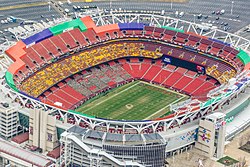 Paul then got into the habit of dusting the song off for special occasions. For instance, during his “2004 Summer Tour,” he played it once on June 24th when in Paris that year. During his “Summer Live ‘09” tour, he once again wheeled it out when he played his August 1st show in Washington DC at FedEx Field, dedicating the song to the new first lady Michelle Obama. Then he played it on his Paris show on December 10th, 2009 during his “Good Evening Europe” tour. Paul then played the song at three shows of his "On The Run" tour, July 26th and 27th, 2011 in Montreal, Canada, and then on November 30th, 2011 in Paris. Paul then got into the habit of dusting the song off for special occasions. For instance, during his “2004 Summer Tour,” he played it once on June 24th when in Paris that year. During his “Summer Live ‘09” tour, he once again wheeled it out when he played his August 1st show in Washington DC at FedEx Field, dedicating the song to the new first lady Michelle Obama. Then he played it on his Paris show on December 10th, 2009 during his “Good Evening Europe” tour. Paul then played the song at three shows of his "On The Run" tour, July 26th and 27th, 2011 in Montreal, Canada, and then on November 30th, 2011 in Paris.
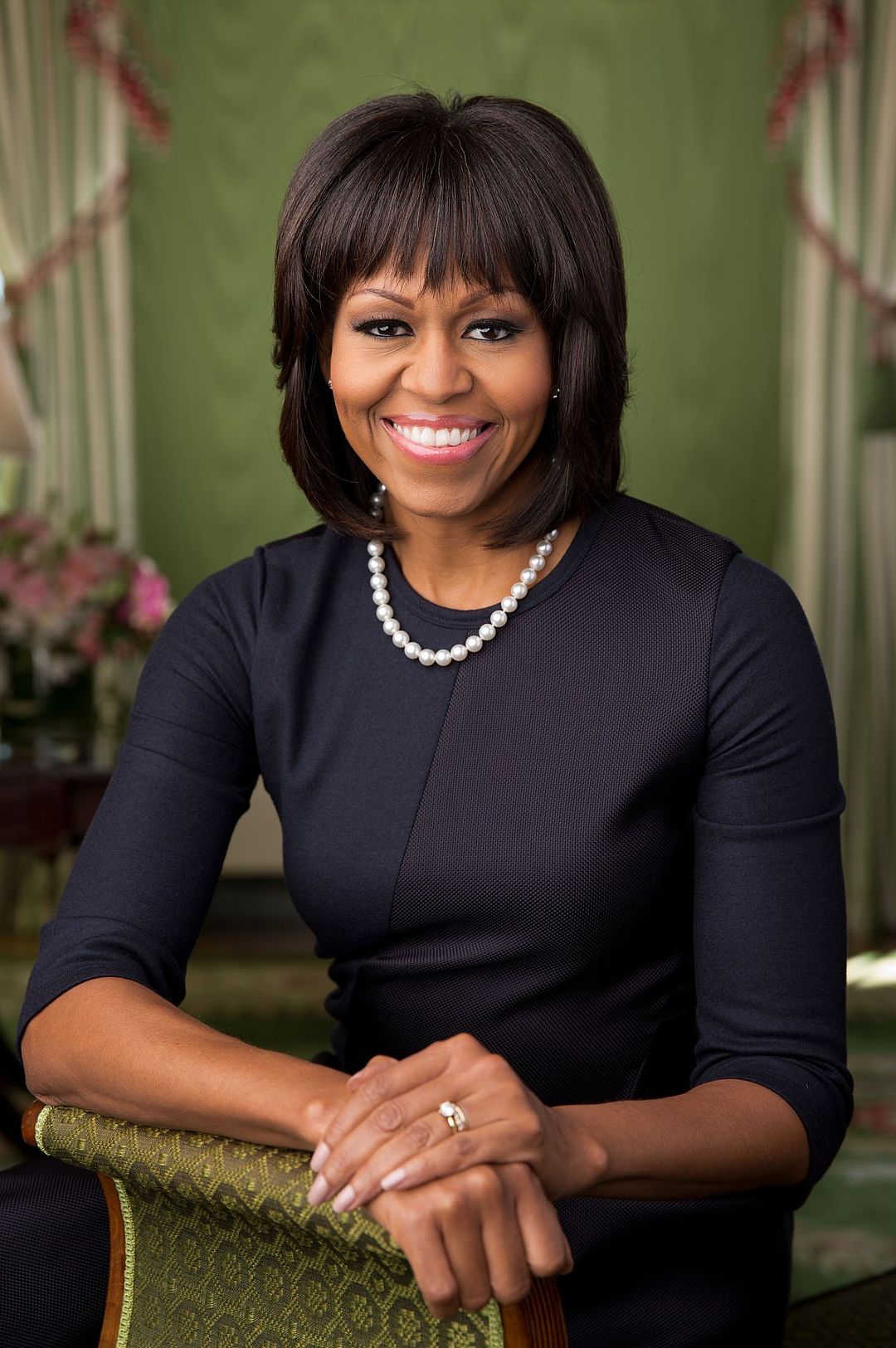 Another interesting performance of “Michelle” was on June 2nd, 2010 at The White House when receiving his “Gershwin Prize For Popular Song” award. He sang the song especially for Michelle Obama who was in attendance and sang along in her seat. Because of the romantic sentiments of the song, Paul commented, "I could be the first guy ever to be punched out by a president." Another interesting performance of “Michelle” was on June 2nd, 2010 at The White House when receiving his “Gershwin Prize For Popular Song” award. He sang the song especially for Michelle Obama who was in attendance and sang along in her seat. Because of the romantic sentiments of the song, Paul commented, "I could be the first guy ever to be punched out by a president."
Also worthy of a mention is Paul's quick demonstration of how he originally played the early version of the song at parties, this being featured in his 2021 Hulu documentary series "McCartney 3,2,1."
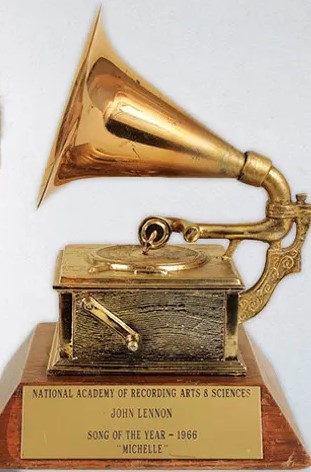
Beatles 1966 Grammy for Michelle as "Song Of The Year"
Conclusion
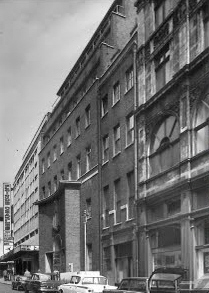 As highly acclaimed as “Michelle” is, many fans didn’t know what to think of a Beatles song with French lyrics. “I saw David Bailey down at the Ad Lib not long after it came out,” remembers McCartney, “and he said, ‘Ere, that “Michelle.” It is tongue in cheek; you are joking with that, aren’t you?’ He thought it was a parody of a French song, which in many ways it is. He thought that was funny. I said, ‘F**k off!, quite taken aback that he thought it was a joke. I was very insulted. But I knew what he meant.” As highly acclaimed as “Michelle” is, many fans didn’t know what to think of a Beatles song with French lyrics. “I saw David Bailey down at the Ad Lib not long after it came out,” remembers McCartney, “and he said, ‘Ere, that “Michelle.” It is tongue in cheek; you are joking with that, aren’t you?’ He thought it was a parody of a French song, which in many ways it is. He thought that was funny. I said, ‘F**k off!, quite taken aback that he thought it was a joke. I was very insulted. But I knew what he meant.”
Paul did end up getting the last laugh, though. “Michelle” ended up winning a Grammy Award for “Song Of The Year” in 1966 and, in 1999, BMI recognized the song as the 42nd most performed song of the 20th Century. For a song that began life as a ruse to get chicks, it did pretty well for itself.
Song Summary
“Michelle”
Written by: John Lennon / Paul McCartney
-
Song Written: 1959 to November, 1965
-
Song Recorded: November 3, 1965
-
First US Release Date: December 6, 1965
-
-
US Single Release: n/a
-
Highest Chart Position: n/a
-
British Album Release: Parlophone #PCS 3075 “Rubber Soul”
-
Length: 2:42
-
Key: F major
-
Producer: George Martin
-
Engineers: Norman Smith, Ken Scott
Instrumentation (most likely):
- Paul McCartney - Lead and Background Vocals, Rhythm Guitar (1964 Epiphone Texan FT-79), Bass Guitar (1964 Rickenbacker 4001S)
- George Harrison – Rhythm Guitar (1962 Gibson J-160E), Lead Guitar (1965 Gibson ES-345?), Background Vocals
- John Lennon - Rhythm Guitar (1965 handmade Spanish Classical guitar), Background Vocals
- Ringo Starr – Drums (1964 Ludwig Super Classic Black Oyster Pearl)
Written and compiled by Dave Rybaczewski
|
IF YOU WOULD LIKE TO MAKE A DONATION TO KEEP THIS WEBSITE UP AND RUNNING, PLEASE CLICK BELOW!
Sign Up Below for our MONTHLY BEATLES TRIVIA QUIZ!
|